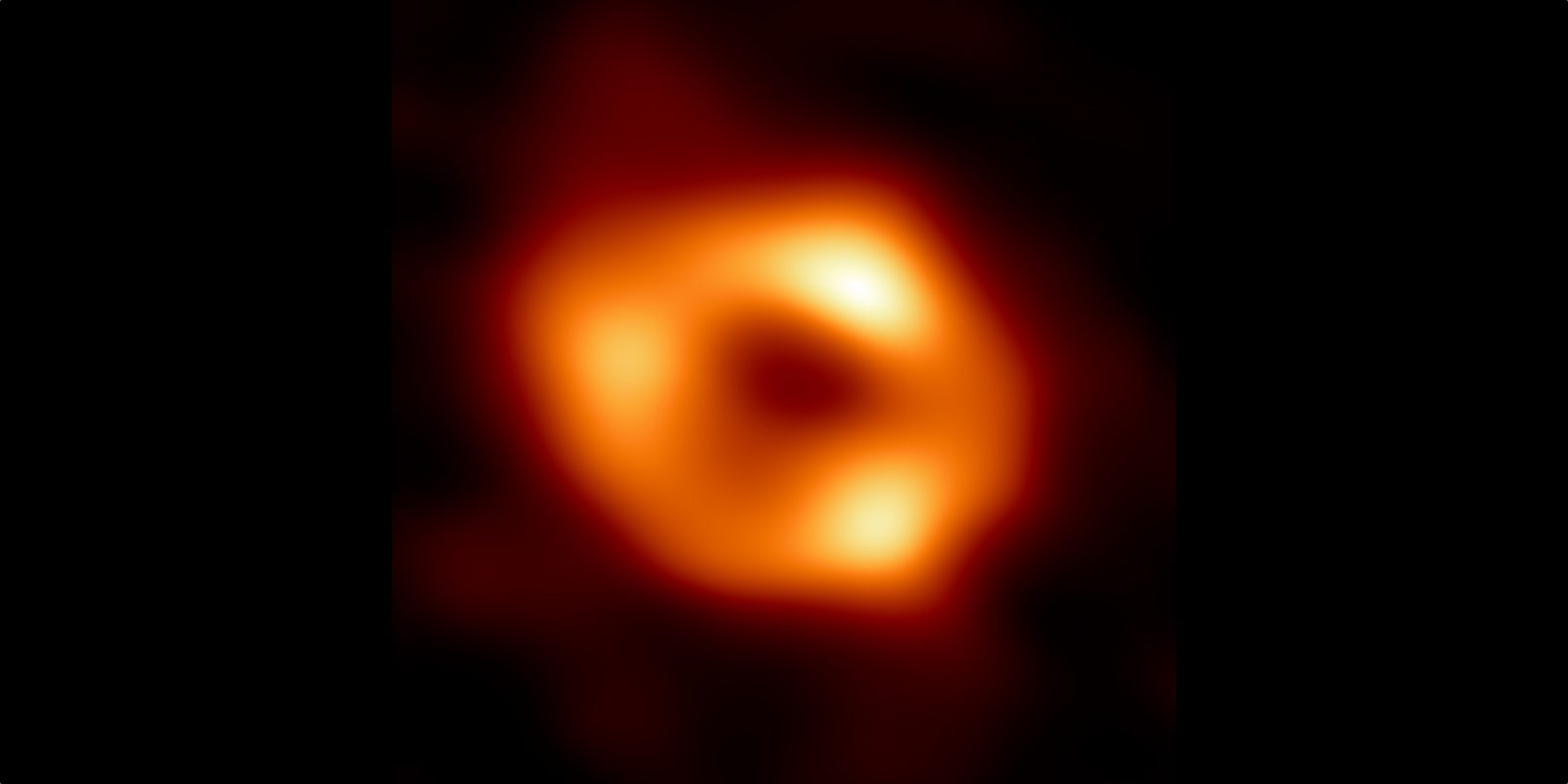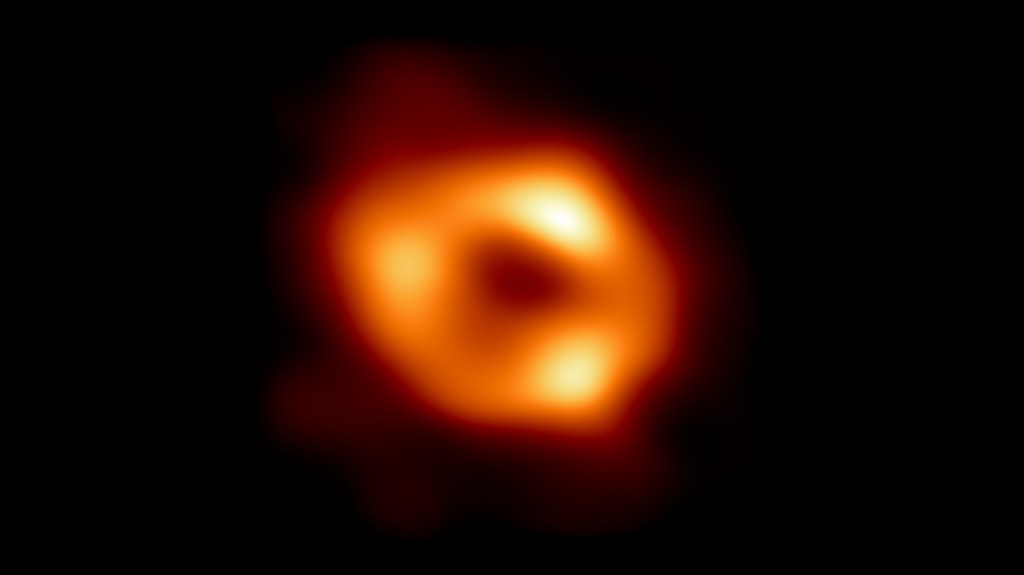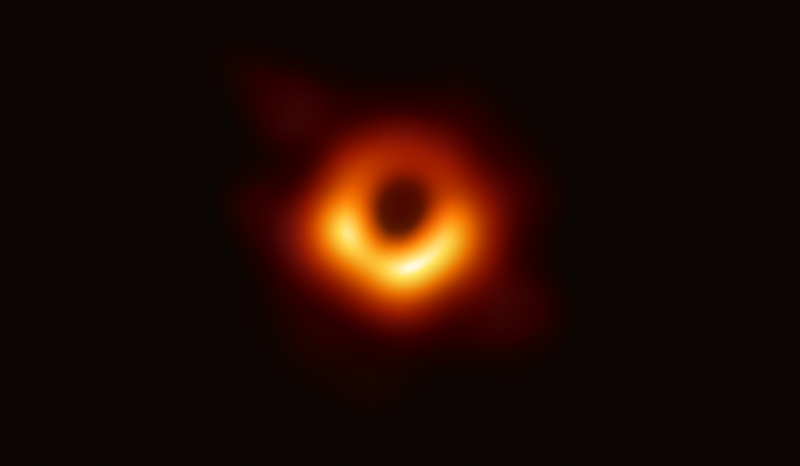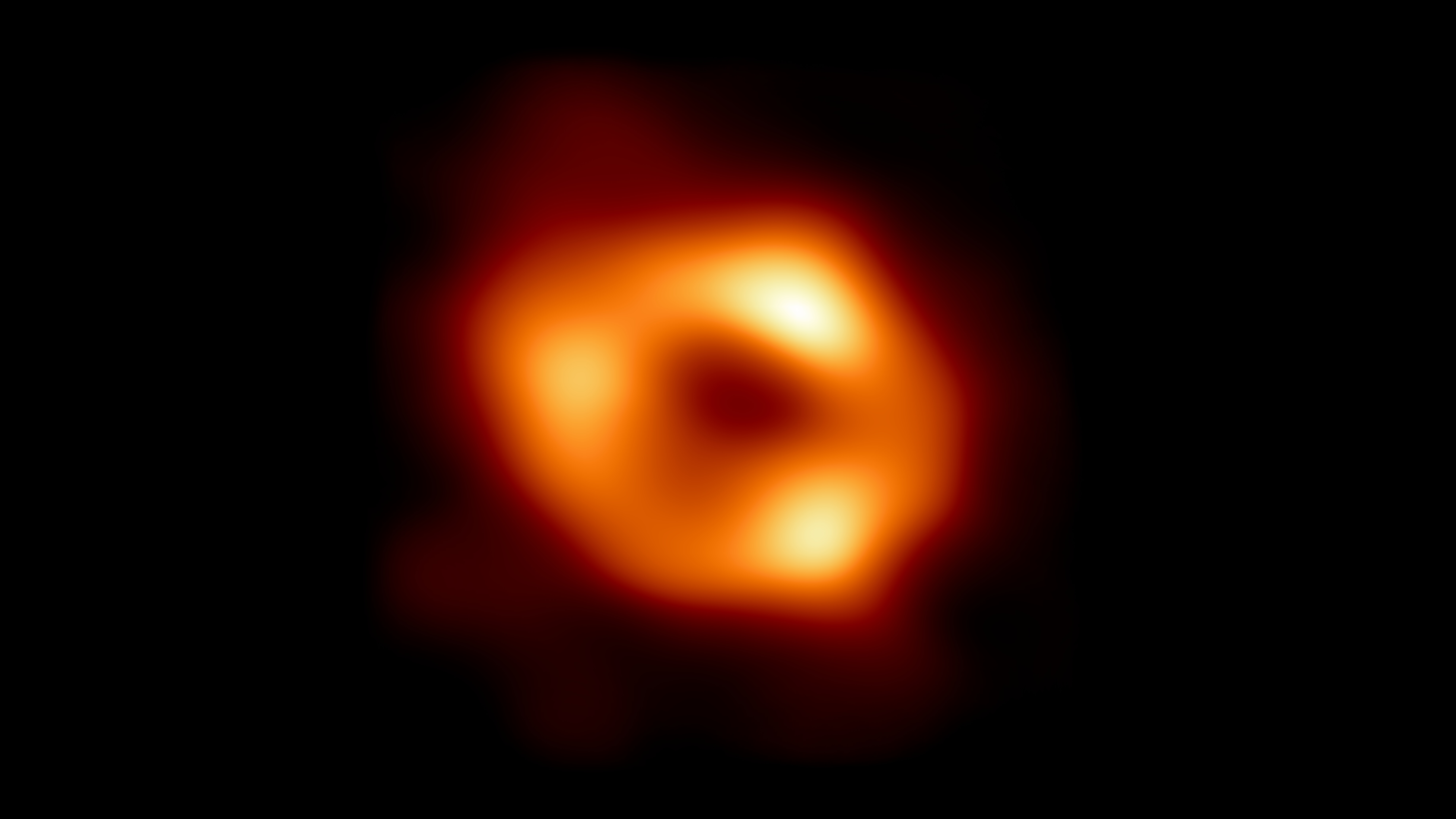
Three years after the release of the first image of a black hole captured in another galaxy, astronomers are revealing the first image of what is believed to be the black hole at the center of our own galaxy.
Sagittarius A* (or Sgr A*, pronounced A-star) is an object 27,000 light-years from Earth that is four million times more massive than the Sun. The image of the object was created by the Event Horizon Telescope Collaboration based on eight radio telescopes around Earth.
While the black hole itself is just darkness, the image produced depicts glowing gas and light bending around the gravitational pull of the black hole.
In 2019, the EHT Collaboration published the first-ever image of a black hole captured even further away in the Messier 87 galaxy. Scientists are now comparing the two images and remarking on the similarities despite M87*, the first black hole captured, being over a thousand times larger and more massive.
“This tells us that General Relativity governs these objects up close, and any differences we see further away must be due to differences in the material that surrounds the black holes,” says Sera Markoff, Co-Chair of the EHT Science Council and a professor of theoretical astrophysics at the University of Amsterdam, the Netherlands.

That size difference also made it more challenging to capture Sagittarius A* compared to M87* despite it being closer. While the gas that orbits each black hole travels at around the same speed, the gas has a much larger path to travel around the much larger black hole.
“The gas in the vicinity of the black holes moves at the same speed — nearly as fast as light — around both Sgr A* and M87*,” says Chi-kwan (‘CK’) Chan, from Steward Observatory and Department of Astronomy and the Data Science Institute of the University of Arizona. “But where gas takes days to weeks to orbit the larger M87*, in the much smaller Sgr A* it completes an orbit in mere minutes. This means the brightness and pattern of the gas around Sgr A* was changing rapidly as the EHT Collaboration was observing it — a bit like trying to take a clear picture of a puppy quickly chasing its tail.”


Aside from the general cool factor of having a second image of a black hole (and first within our own galaxy), the expanded data set allows scientists to study the differences and similarities of how gas behaves around each supermassive black hole. Ultimately, this could inform our understanding of how galaxies are formed and evolve.
FTC: We use income earning auto affiliate links. More.



Comments